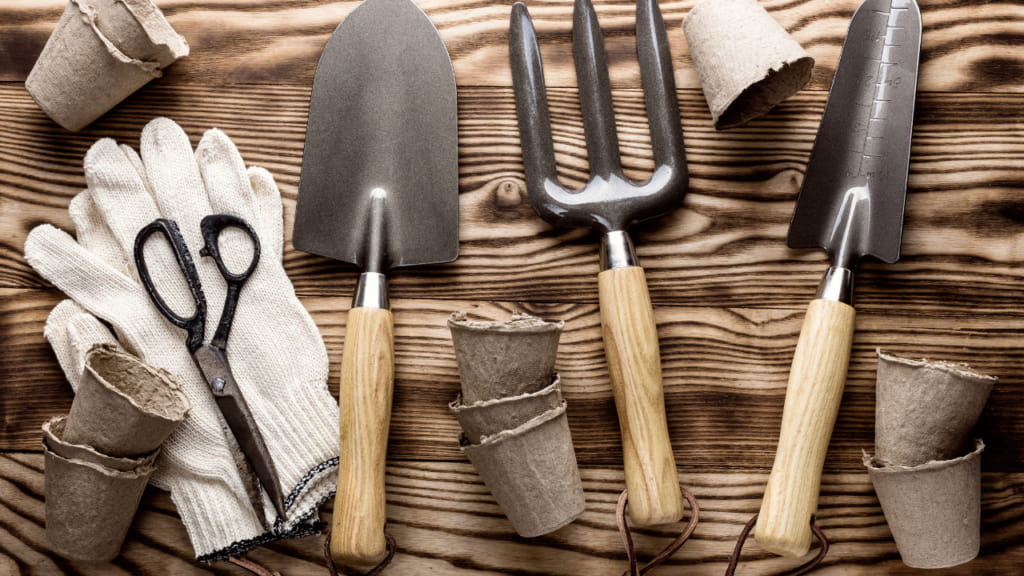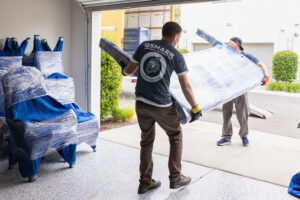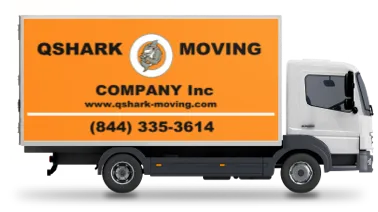How to Pack Garden Tools for Moving

Are you a garden enthusiast facing the challenge of a big move? You’re not alone! Whether you’re dealing with a rose-tinted garden or a full-blown outdoor haven, moving your garden equipment comes with challenges. But worry not; this guide is your one-stop shop for all the tips and tricks to know how to pack garden tools for moving efficiently.
Key Questions Answered:
- How do you transport garden tools for moving?
- How do you pack rakes and shovels?
- How do you pack a garden hose for moving?
Assessment Before Packing
Before diving into the packing spree, knowing what you’re dealing with is crucial. Not everything in your garden shed or garage is worth the transportation costs. Here’s where decluttering plays a vital role.
Quick Tips:
- Evaluate the condition of each tool.
- Consider the cost of moving vs. replacing.
To make an informed decision, you might want to consult how much movers cost in San Diego as an example, even if you’re moving elsewhere.
Sorting Garden Equipment: The Nitty-Gritty
Okay, you’ve decluttered, but what next? Sorting is where the magic happens, transforming chaos into order.
Create Categories
Divide your tools into categories like:
- Long-handled tools (e.g., rakes, hoes)
- Power tools (e.g., lawnmower, leaf blower)
- Handheld tools (e.g., pruners, trowels)
- Garden furniture (e.g., benches, outdoor tables)
- Miscellaneous items (e.g., hoses, gloves)
Use Labels
Once categorized, label each group. This will help you during the packing stage and make your life easier when you’re unpacking at your new place.
Labeling Tips:
- Use waterproof markers.
- Attach labels to a visible part of the tool.
- Use color-coded labels for different categories.
Make an Inventory
Take it up a notch by creating an inventory list. Document each item, its category, and its condition. An inventory is your safety net in case anything goes awry.
Reasons to Have an Inventory:
- Tracking: Knowing what you’ve packed and what’s left is easier.
- Insurance: Useful for claims in case of loss or damage.
- Unpacking: A roadmap for setting up your new garden.

Preparing Garden Tools for Moving: Safety and Efficiency
You’ve sorted your tools, but before they journey, they need some TLC (Tender Loving Care).
Cleanliness is Paramount
Dirt and plant residue can lead to rust and corrosion. Therefore, before you pack, make sure to clean garden accessories thoroughly. You may even want to oil tools like pruners and shears a little to ensure smooth operation post-move.
Cleaning Checklist:
- Rinse off soil and plant debris.
- Wipe down surfaces.
- Oil joints and blades as needed.
Dismantling Larger Items
Dismantle larger items like a lawn mower or an outdoor jacuzzi if possible. Remove any detachable parts and pack them separately. Label each part and keep the screws and bolts in a Ziplock bag attached to the main item.
Quick Tip: Professional movers can handle this for those not interested in the DIY route. Qshark Moving Company specializes in services like assembling and disassembling items, making your moving experience a breeze.
Safety Measures
When packing sharp or hazardous materials, take extra precautions. Wrap sharp edges in old towels or bubble wrap and seal them tightly with tape. Packaging chemicals like fertilizers or pesticides ensures they’re in leak-proof containers.
Safety First:
- Always wear gloves and protective eyewear.
- Keep hazardous materials in a separate box, labeled clearly.
- Don’t rush. Take your time to ensure everything is secure.
Tips for Specific Tools: A Closer Look
Packing garden tools isn’t a one-size-fits-all affair. Different tools require different approaches. Here’s how to do it right.
Long-Handled Tools: Bundle of Joy
Long-handled tools like rakes, shovels, and hoes can be awkward to pack. The trick is to bundle them together, handle-to-handle and head-to-head. Use durable packing materials like biodegradable bubble wrap or moving blankets for protection.
Power Tools: Handle with Care
Power tools like lawnmowers, leaf blowers, and snow blowers need extra attention. Drain all fluids like oil and gas to prevent leakage. Detach any removable parts and pack them separately. If dismantling seems daunting, don’t sweat it. Qshark Moving Company can help you with that.
Small Hand Tools: Compact and Cushioned
Hand tools like pruners, trowels, and hedge shears can be packed in a toolbox. Use crushed paper or, even better, packing paper for cushioning to prevent movement during transit.
Special Items: The Odd Ones Out
Remember the special items like your outdoor grill or propane tank. These require specialized packing techniques. For example, following safety guidelines, disconnect the gas tank and pack it separately for a propane grill.
Special Tips for Odd Items:
- Use the original boxes if available.
- Consult a moving quote to understand if special items incur extra costs.
- Consider hiring heavy-item movers for particularly bulky or awkward pieces.

Conclusion: How to Pack Garden Tools for Moving
Packing garden tools for a move isn’t just about shoving things into boxes. It’s an art and a science, requiring careful planning, meticulous sorting, and a commitment to safety. But the payoff is worth it—a seamless move and a garden ready to bloom at your new place.
The Takeaway
- Be Thorough: Don’t skip the cleaning and sorting steps; they set the stage for efficient packing.
- Be Mindful: Special tools require special care. Always prioritize safety.
- Be Smart: If this all sounds overwhelming, professional help is just a click away. With Qshark Moving Company, you’re not just hiring movers but buying peace of mind.
This comprehensive guide will make your moving experience less of a chore and more of an adventure. For more tips on making your move smooth, check out other guides like how to pack electronics for moving and how to get a COI for moving.
Happy moving, and may your new garden flourish!
FAQ How to Pack Garden Tools for Moving
Q: How do you transport garden tools for moving?
A: Transporting garden tools involves a mix of careful packing and proper vehicle arrangement. Once packed, place your long-handled tools and bulky items on the floor of the moving truck. Small hand tools should be in boxes near the top of other items to prevent damage. If you’re unsure about the logistics, Qshark Moving Company offers comprehensive services to ease your worries.
Q: How do you pack rakes and shovels?
A: Rakes and shovels can be bundled together. Lay them handle-to-handle and head-to-head, then wrap them tightly with moving blankets or bubble wrap. Secure the bundle with strong tape or bungee cords.
Q: How do you pack loose tools for moving?
A: Loose tools can be placed in a toolbox with cushioning materials like packing paper or bubble wrap. A sturdy cardboard box will suffice if you don’t have a toolbox. Use dividers or Ziplock bags to keep smaller items organized.
Q: How do you pack a garden hose for moving?
A: Drain all the water from the hose, then coil it into a circular shape. Use zip ties or twine to secure the coil. Place the coiled hose in a box or directly in the moving truck, ensuring heavier items don’t squash it.
Q: How do you pack mops and brooms for moving?
A: Mops and brooms can be treated much like long-handled garden tools. Bundle them together and wrap them in a moving blanket or bubble wrap. Make sure the mop head is dry to prevent mold and mildew.
Q: How do you transport hand tools?
A: For hand tools like screwdrivers, hammers, and pliers, a toolbox is your best friend. If you don’t have one, you can wrap individual tools in packing paper and place them in a sturdy box cushioned with more paper or bubble wrap.


 How to Pack a Garage for Moving
How to Pack a Garage for Moving How to Pack a Desktop Computer for Moving
How to Pack a Desktop Computer for Moving How to Pack Vinyl Records for Moving
How to Pack Vinyl Records for Moving How to Pack Pillows for Moving: A Fluff-Free Guide
How to Pack Pillows for Moving: A Fluff-Free Guide How To Get Money Back from a Moving Company
How To Get Money Back from a Moving Company